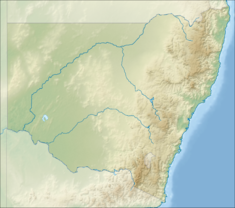
Haberfield is a suburb in the Inner West of Sydney, in the state of New South Wales, Australia. Haberfield is located 6.5 kilometres west of the Sydney central business district in the local government area of the Inner West Council.

Elizabeth Farm is a historic estate located at 70 Alice Street, Rosehill, a suburb of Sydney, New South Wales, Australia. Elizabeth Farm was the family home of wool pioneers John and Elizabeth Macarthur. The estate was commenced in 1793 on a slight hill overlooking the upper reaches of Parramatta River, 23 kilometres (14 mi) west of Sydney Cove. The Burramattagal clan of the Dharug people are the traditional custodians of the area; their presence is recalled in the name Parramatta.
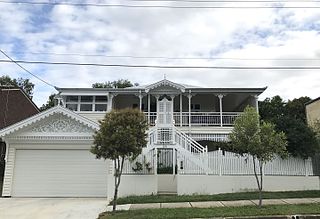
Australian residential architectural styles have evolved significantly over time, from the early days of structures made from relatively cheap and imported corrugated iron to more sophisticated styles borrowed from other countries, such as the California bungalow from the United States, the Georgian style from Europe and Northern America, and the Victorian style from the United Kingdom. A common feature of the Australian home is the use of fencing in front gardens, also common in both the United Kingdom and the United States.

Federation architecture is the architectural style in Australia that was prevalent from around 1890 to 1915. The name refers to the Federation of Australia on 1 January 1901, when the British colonies of Australia collectively became the Commonwealth of Australia.
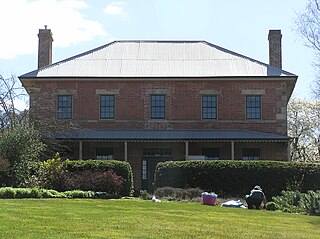
Harper's Mansion is a heritage-listed house and now house museum in Berrima, Wingecarribee Shire, New South Wales, Australia. It is recognised for its Georgian design. Harper's Mansion is now a property of the National Trust of Australia (NSW), which acquired it in 1978. It was added to the New South Wales State Heritage Register on 1 March 2002.

Christ Church Cathedral is a heritage-listed Anglican cathedral complex at Duke Street, Grafton, Clarence Valley Council, New South Wales, Australia. The cathedral was designed by John Horbury Hunt and built from 1874 to 1884 by Reynold Brothers (brickwork) and G. J. T. Lawson (woodwork). It is also known as Cathedral Church of Christ the King and Grafton Anglican Cathedral. The property is owned by the Anglican Diocese of Grafton. It was added to the New South Wales State Heritage Register on 14 March 2003.
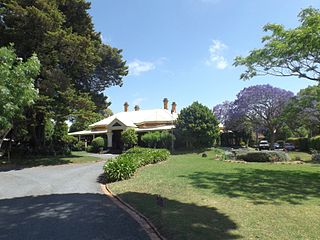
Vacy Hall is a heritage-listed villa at 135 Russell Street, Toowoomba, Toowoomba Region, Queensland, Australia. It was built c. 1899. It was added to the Queensland Heritage Register on 21 October 1992.

The Howick Street houses are five heritage-listed neighbouring semi-detached houses at 194, 196, 198, 200 and 202 Howick Street, Bathurst, Bathurst Region, New South Wales, Australia. 194, 196 and 198 are separately heritage-listed, while 200 and 202 are listed together. The houses are privately-owned. It is also known as Terrace Cottages. The five houses were all added to the New South Wales State Heritage Register on 2 April 1999.
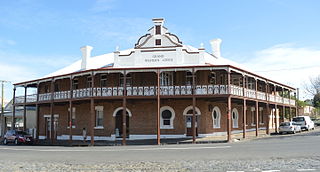
The Grand Western Lodge is a heritage-listed former hotel and boarding house at 27 Victoria Street, Millthorpe, Blayney Shire, New South Wales, Australia. It was built by John Wells. It is also known as Grand Western Lodge Hotel. It was added to the New South Wales State Heritage Register on 2 April 1999.

Royal Oak Arms Hotel is a heritage-listed former Australian pub, store and bank building at 18 King Street, Paterson, Dungog Shire, New South Wales, Australia. It was also known as the Royal Oak Inn. It was added to the New South Wales State Heritage Register on 2 April 1999.

Alloway is a heritage-listed cottage located at 15 Gwydir Street, Moree, in the North West Slopes region of New South Wales, Australia. It was built during 1875. The cottage was added to the New South Wales State Heritage Register on 2 April, 1999.

The Collins Street wooden terraces are two sets of heritage-listed residences at 24–40 and 42–44 Collins Street, Kiama, New South Wales, Australia. They were built in the 1870s and 1880s. They were added to the New South Wales State Heritage Register on 2 April 1999.

Brislington is a heritage-listed former residence, inn, doctor's surgery, nurses' home and now museum at 10 George Street, Parramatta, Sydney, New South Wales, Australia. It was built from 1819 to 1821 by John Hodge. Incorporated into the former Parramatta District Hospital for many years, it now serves as the Brislington Medical and Nursing Museum. The property is owned by the New South Wales Department of Health. It was added to the New South Wales State Heritage Register on 2 April 1999.

Laurelbank is a heritage-listed former residence and now function centre at 85–87 Penshurst Street, Willoughby, City of Willoughby, New South Wales, Australia. It was built from 1850 to 1884. The property is owned by the Laurelbank Masonic Centre Pty Ltd, a community group. It was added to the New South Wales State Heritage Register on 2 April 1999.

Hooper Cottage is a heritage-listed residence at 17 Gilderthorpe Avenue in the Sydney suburb of Randwick in the City of Randwick local government area of New South Wales, Australia. It was built from 1847 to 1848. It was added to the New South Wales State Heritage Register on 2 April 1999.
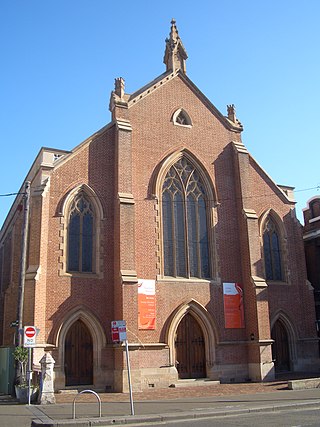
The Newtown Mission Uniting Church is a heritage-listed Uniting church at 280a King Street, Newtown, City of Sydney, New South Wales, Australia. It was designed by George Allen Mansfield and built in 1859 by Thomas Abbott. It was added to the New South Wales State Heritage Register on 2 April 1999.

117–117a Gloucester Street, The Rocks is a heritage-listed terrace houses located in the Long's Lane Precinct at 117–117a Gloucester Street, in the inner city Sydney suburb of The Rocks in the City of Sydney local government area of New South Wales, Australia. It was designed by W. Foggitt and built from 1912 to 1915. It is also known as Longs Lane Terraces/Precinct (Long's). The property is owned by Property NSW, an agency of the Government of New South Wales. It was added to the New South Wales State Heritage Register on 10 May 2002.

66–68 Bettington Street is a heritage-listed Edwardian terrace house located at 66–68 Bettington Street, in the inner city Sydney suburb of Millers Point in the City of Sydney local government area of New South Wales, Australia. It was added to the New South Wales State Heritage Register on 2 April 1999.

18 Merriman Street, Millers Point is a heritage-listed residence located at 18 Merriman Street, in the inner city Sydney suburb of Millers Point in the City of Sydney local government area of New South Wales, Australia. It was added to the New South Wales State Heritage Register on 2 April 1999.

21–23 Lower Fort Street, Millers Point are heritage-listed terrace houses located at 21–23 Lower Fort Street, in the inner city Sydney suburb of Millers Point in the City of Sydney local government area of New South Wales, Australia. It was built from 1832. It is also known as Nicholson's Houses. The property was added to the New South Wales State Heritage Register on 2 April 1999.

